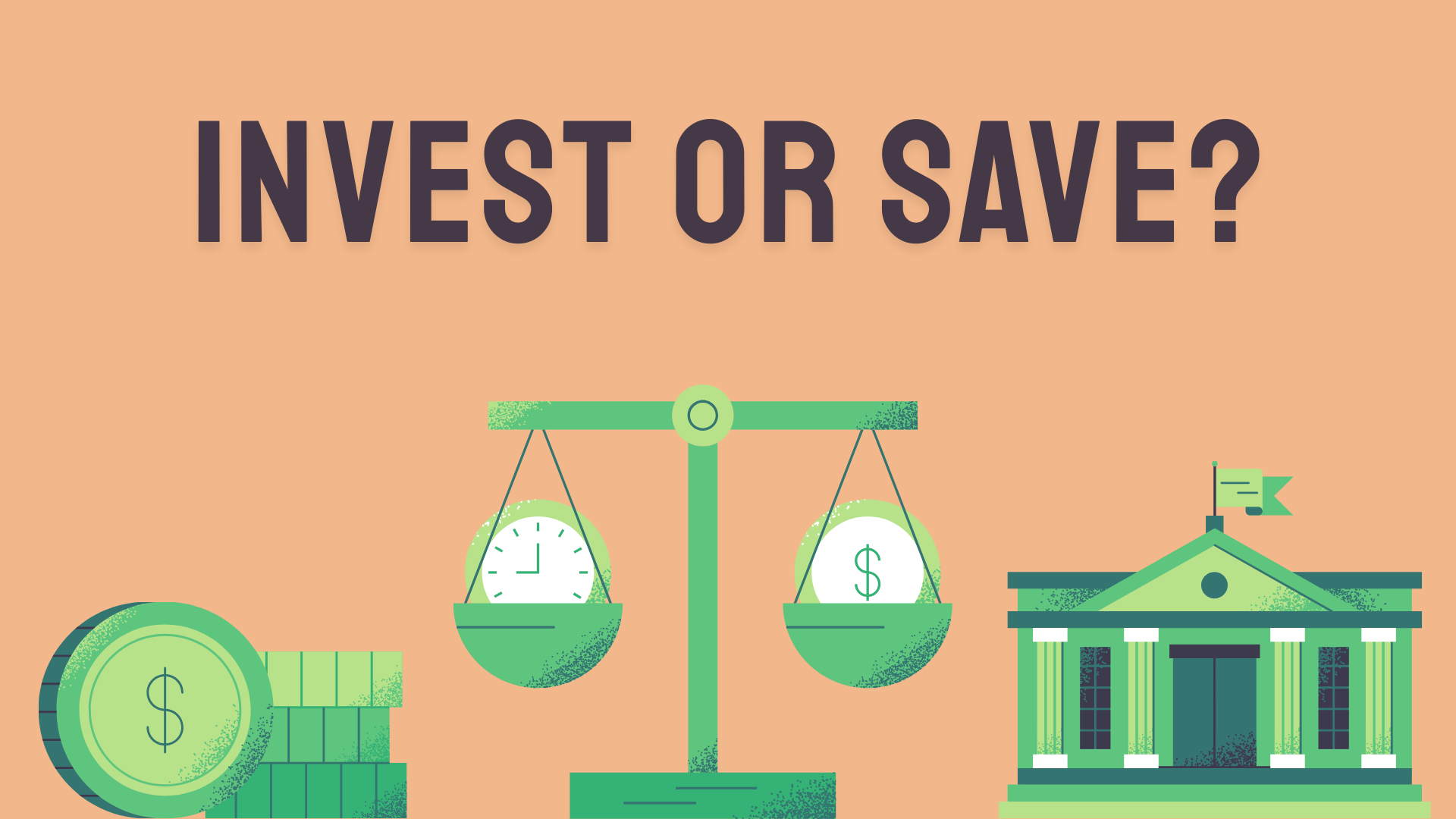What is the difference between saving and investing?
Deciding whether you should save or invest can be tricky. Here’s what you need to know!

Investing and saving are two sides of the same coin, but that doesn’t mean you have to leave your finances to a coin toss! Here’s what you need to know to help you decide which is best for you.
When you start being able to put a little money aside from your paycheck each week, month, or year, it is really important to know where to put it, and how to maximize your money. One of the key things to note is the difference between saving and investing. Both aim to grow your money but go about it in different ways.
Prioritizing Your Financial Goals
The choice of whether to save or invest is totally dependent on your overall financial situation and your goals for your money. Saving tends to be for short-term or specific purchases or to have easily accessible funds.
For example, you would save for a vacation later in the year, or a large, one-off purchase, but you may invest your longer-term savings for a house deposit or retirement. Another key difference between them is your risk tolerance.
Saving tends to be almost zero risk. Depending on the interest rate, you are usually guaranteed a return on your savings, with a very low chance of losing money. One of the most common instances where you would “lose” money with a savings account is inflation.
If a savings account offers a 1% interest rate but inflation is at 3%, your money’s value is essentially decreasing by 2% every year. This decrease directly impacts your purchasing power, which refers to the maximum dollar value of cash you can withdraw or securities that can be purchased without having to dump additional funds into your account.
With investments, you may be able to earn a higher return, but you are at risk of losing some of your investment if things go south. If you invest in the stock market, your investment is going to take a hit if the stock market plummets. On the other hand, if the stock market is sunshine and rainbows, your investment will likely grow instead.
How to Maximize Your Returns Through Long-Term Investments
The risk involved with investing in the stock market gets the blood pumping but it is also a major part of the reason why investing tends to provide higher returns than savings accounts. Long-term investments, also called growth stocks, are generally safe and will allow you to weather any hits the stock market may take.
Coca-Cola is a great example. The company is a staple in the food and drink industry so it’s safe to say it isn’t going anywhere. The company’s stable presence makes it a decent investment opportunity with a low risk of nosediving. Coca-Cola isn’t paying us, we swear. Long-term investments aren’t limited to stocks!
Common examples of long-term investments outside the stock market include real estate, where the value of a house is usually increasing because real estate is in limited supply, and there is almost always demand for housing. To learn more about supply and demand, check out this article.
The term liquidate refers to converting property or assets into cash or cash equivalents by selling them. For example, you might choose to sell your Pokémon card collection so you have money to put into your college fund. If you know you are going to need to liquidate your investments at a specific time, savings may be better.
There is a chance that at the point you need your money, it isn’t a good time to sell your investments, and your return may be lower as a result. It is really important to always have some emergency or rainy day funds in easily accessible accounts, rather than tying up too much of your money in long-term investments.
Investments should be saved for money you won’t need to touch for a little while that you can leave it to grow. In terms of how to do both of these things, we will need a much longer article. In short, savings are done with a bank account, and it is always worth shopping around to see who has the best rate.
Look for banks offering promotional rates to get the most out of your savings. Investments tend to be handled by a broker, but nowadays there are lots of online options for these, such as WealthSimple, Fidelity, or through your bank.
Here you can invest in stocks, ETFs, bonds, and mutual funds. Investing and saving both have pros and cons, and it is worth being aware of all of these when you start thinking about how you want to grow your money.
